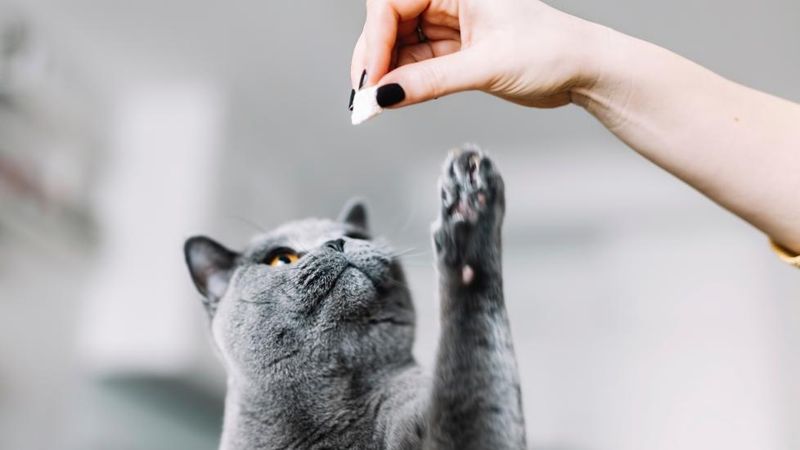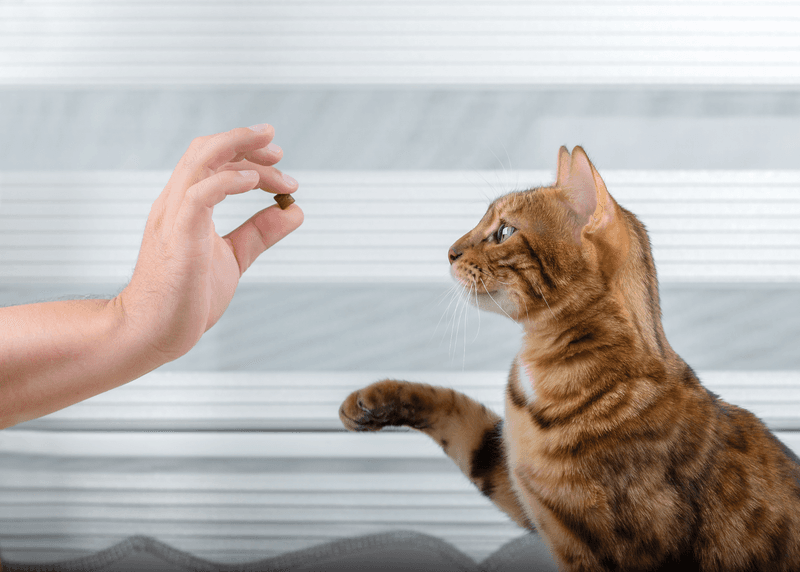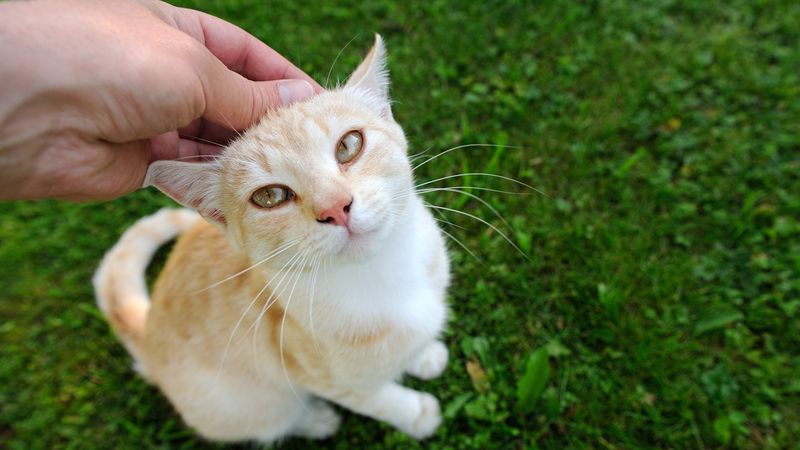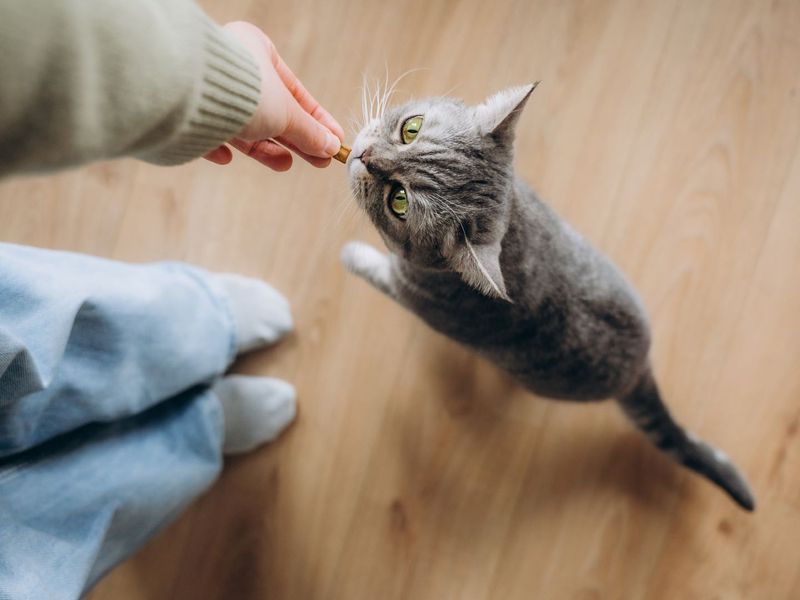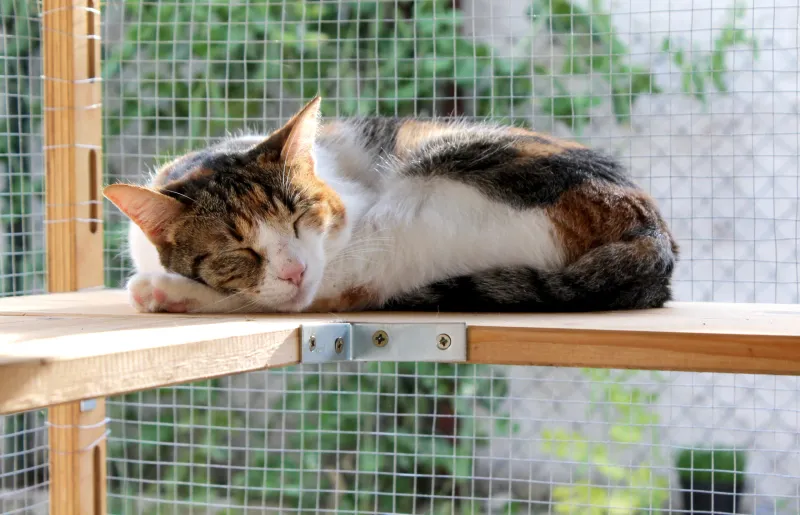📖 Table of Content:
- 1. Clicker Training Creates Clear Communication
- 2. Treat Timing Makes All The Difference
- 3. Play Rewards Build Stronger Bonds
- 4. Target Training Teaches New Skills
- 5. Environmental Enrichment Prevents Problem Behaviors
- 6. Praise and Petting Reinforce Everyday Successes
- 7. Redirection Transforms Unwanted Behaviors
Cats often carry a reputation for being untrainable, yet they are highly responsive to the right kind of guidance. With their keen intelligence and sensitivity, they quickly learn what behaviors earn them praise and attention. Positive reinforcement taps into their natural curiosity and desire for comfort.
Punishment rarely works with cats and can damage trust, making behavioral issues worse instead of better. In contrast, rewarding desired actions encourages repeat behavior without creating fear or confusion. This method builds a foundation of mutual understanding between the cat and the human.
From redirecting scratching to encouraging calm during grooming, reward-based training can shape even the most stubborn habits. Simple treats, praise, or playtime can go a long way when used consistently. Over time, a well-trained cat becomes more confident, cooperative, and deeply bonded with their household.
1. Clicker Training Creates Clear Communication
A small plastic clicker becomes your secret weapon in cat training. The distinct clicking sound marks the exact moment your cat does something right, creating a precise communication system between you two.
Start by clicking and immediately giving a treat, repeating until your cat associates the click with rewards. Then use it during training moments – click when your cat uses the scratching post instead of furniture, or sits calmly during grooming.
The beauty of clicker training lies in its clarity. Cats quickly understand which specific behaviors earn rewards, making learning faster and more enjoyable for both of you.
2. Treat Timing Makes All The Difference
Cats live in the moment, making split-second timing crucial when rewarding behavior. Treats must arrive within 3 seconds of the desired action or your cat won’t connect the reward with what they just did.
Keep small treat portions in strategic locations around your home for quick access. When your cat uses their litter box properly or greets guests calmly, immediately offer the reward with cheerful praise.
For maximum effectiveness, choose high-value treats your cat rarely gets otherwise – tiny bits of cooked chicken, freeze-dried meat, or commercial treats specifically designed for training.
3. Play Rewards Build Stronger Bonds
Not all cats are food-motivated, but nearly every feline enjoys playtime. Using interactive toys as rewards creates a double benefit: reinforcing good behavior while strengthening your relationship through shared fun.
Notice when your cat does something praise-worthy – like using their scratching post or coming when called. Immediately engage them with their favorite feather wand or crinkle ball for a 30-second play session.
The combination of your attention and physical activity releases feel-good chemicals in your cat’s brain, creating powerful positive associations with the behaviors you want to encourage.
4. Target Training Teaches New Skills
Target training involves teaching your cat to touch their nose to an object – usually a small stick with a ball on the end. This simple skill becomes the foundation for teaching more complex behaviors.
Hold the target near your cat’s nose. Most cats naturally investigate by sniffing or touching it. The moment their nose makes contact, click (or use a verbal marker like “yes!”) and reward with a treat.
Once mastered, use this skill to guide your cat to specific locations, into carriers, or away from forbidden areas. Many cats enjoy target training so much they’ll perform tricks just for the mental stimulation it provides.
5. Environmental Enrichment Prevents Problem Behaviors
Creating an engaging environment for your cat naturally encourages positive behaviors without constant training sessions. Cats with proper outlets for their natural instincts are less likely to develop problematic habits.
Provide vertical spaces like cat trees and window perches to satisfy climbing needs. Rotate toys regularly to maintain interest, and consider food puzzles that make mealtime mentally stimulating.
Strategic placement of scratching posts near furniture your cat might otherwise target gives them appropriate options. When you notice your cat using these environmental enrichments, offer praise or treats to further reinforce these desirable choices.
6. Praise and Petting Reinforce Everyday Successes
Verbal praise costs nothing yet means everything to your social cat. The sound of your happy voice combined with gentle petting, creates a powerful reward system for daily good behaviors.
Watch for moments when your cat naturally does something you appreciate – using their scratching post, settling calmly on their bed, or greeting you without excessive meowing. Immediately respond with enthusiastic but gentle praise and their favorite type of petting.
Some cats prefer cheek scratches while others love chin rubs or back strokes. Learning your cat’s specific preferences makes your praise more effective, turning these small daily interactions into training opportunities.
7. Redirection Transforms Unwanted Behaviors
Rather than punishing your cat for natural behaviors like scratching or pouncing, redirection teaches appropriate alternatives. This strategy acknowledges your cat’s needs while guiding them toward acceptable outlets.
When you catch your cat scratching furniture, gently move them to a nearby scratching post, then reward them for using it. If they pounce on your feet, redirect that hunting energy to a toy instead.
Consistency makes redirection work – always have alternatives ready and respond the same way each time. Your calm, matter-of-fact approach helps your cat learn without creating fear or anxiety that can damage your relationship.

